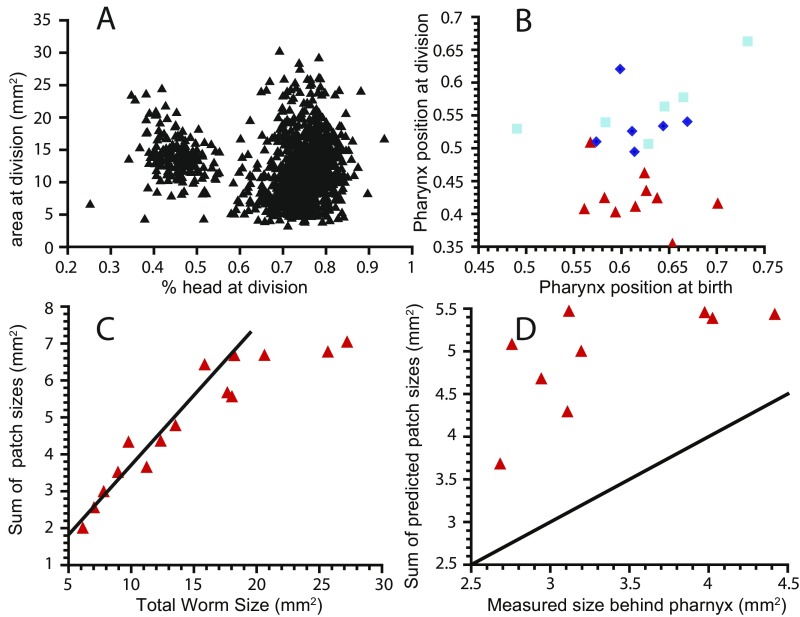Fig. S2.
Position of fission plane. (A) Area at division does not affect the distribution of fission position between prepharynx (low percentage head at division) and postpharynx (high percentage head at division). (B) Comparison of pharynx positions at birth and at division for worms that divide postpharynx (red triangles) which have low relative pharynx position at division (i.e., the pharynx is closer to the head). Worms that divide postpharynx either after less than 14 d (dark blue diamonds) or more than 14 d (light blue squares) both have the pharynx close to the tail (>0.5). (C) The total size of the contact area with the substrate scales linearly with total worm size (linear fit shown as black line), which allows us in D to predict the required contact area for worms that divide prepharynx and show that this predicted size exceeds the available tail size postpharynx. The black line is a y = x guide for the eye.

